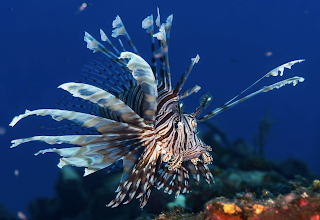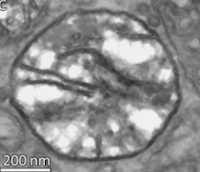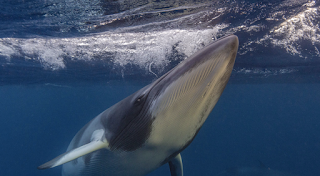Innovative robotic spear hunts deep, destructive lionfish, BP leaves industry trade groups citing climate disagreements, Arctic warming – new factor uncovered, Illegal Indonesia shark fin exports loopholes and more…
Read more from “Popular Science”
 BP announced Wednesday it would leave three U.S.-based industry trade groups, citing environmental concerns. The oil giant, which announced earlier this month it would seek to be carbon neutral by 2050, will end its membership with the American Fuel and Petrochemical Manufacturers (AFPM), the Western States Petroleum Association and the Western Energy Alliance (WEA).
BP announced Wednesday it would leave three U.S.-based industry trade groups, citing environmental concerns. The oil giant, which announced earlier this month it would seek to be carbon neutral by 2050, will end its membership with the American Fuel and Petrochemical Manufacturers (AFPM), the Western States Petroleum Association and the Western Energy Alliance (WEA).
3. Researchers find new reason Arctic is warming so fast
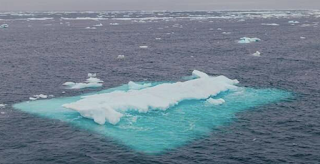 The Arctic has experienced the warming effects of global climate change faster than any other region on the planet. Scientists at the Scripps Institution of Oceanography have developed a new theory aided by computer simulations and observations that helps explain why this occurs. A team led by Scripps researcher Emma Beer observed the changes taking place in the Arctic Ocean, which is largely covered by sea ice for most of the year. There, an unusual situation exists where the water is warm at depth and cold near the surface.
The Arctic has experienced the warming effects of global climate change faster than any other region on the planet. Scientists at the Scripps Institution of Oceanography have developed a new theory aided by computer simulations and observations that helps explain why this occurs. A team led by Scripps researcher Emma Beer observed the changes taking place in the Arctic Ocean, which is largely covered by sea ice for most of the year. There, an unusual situation exists where the water is warm at depth and cold near the surface.
4. A buoy-like device designed to produce electricity from the ocean is being developed in Scotland
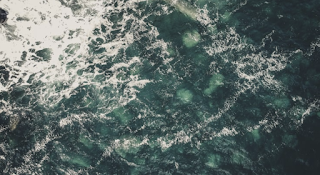 A marine services firm based in Scotland has been awarded a £1 million ($1.29 million) contract to provide a 50-ton wave energy converter designed to turn the movement of the sea into electricity. Malin Renewables will construct a half-scale version of the device, dubbed the Archimedes Waveswing, for AWS Ocean Energy Ltd (AWS). The kit will be fabricated and then put together at a site in the town of Renfrew, near Glasgow.
A marine services firm based in Scotland has been awarded a £1 million ($1.29 million) contract to provide a 50-ton wave energy converter designed to turn the movement of the sea into electricity. Malin Renewables will construct a half-scale version of the device, dubbed the Archimedes Waveswing, for AWS Ocean Energy Ltd (AWS). The kit will be fabricated and then put together at a site in the town of Renfrew, near Glasgow.
5. River flow into the North Pacific plays key role in North America’s climate
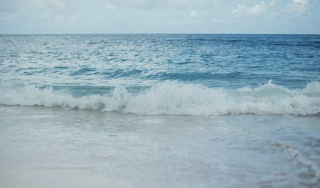 Massive freshwater river flows stemming from glacier-fed flooding at the end of the last ice age surged across eastern Washington to the Columbia River and out to the North Pacific Ocean, where they triggered climate changes throughout the northern hemisphere, new research published today in Science Advances shows. The findings provide new insight into the role the North Pacific Ocean plays in the planet’s climate, said Alan Mix, an oceanographer and paleoclimatologist in Oregon State University’s College of Earth, Ocean, and Atmospheric Sciences and one of the study’s authors.
Massive freshwater river flows stemming from glacier-fed flooding at the end of the last ice age surged across eastern Washington to the Columbia River and out to the North Pacific Ocean, where they triggered climate changes throughout the northern hemisphere, new research published today in Science Advances shows. The findings provide new insight into the role the North Pacific Ocean plays in the planet’s climate, said Alan Mix, an oceanographer and paleoclimatologist in Oregon State University’s College of Earth, Ocean, and Atmospheric Sciences and one of the study’s authors.
6. Illegal shark fin export loopholes in Indonesia
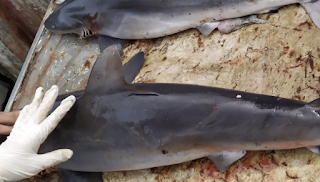 A months-long joint investigation by Indonesian media has shed new light on the ploys used by fishermen and traders to illegally export endangered shark species. Investigative magazine Tempo published the report on Jan. 25, focusing on the illegal shark trade linking fishermen on the island of Lombok and exporters in the port city of Surabaya. The investigation showed that products from some shark species banned for export under Indonesian law were being sold by the fishermen to the exporters. The products, mostly shark fins, end up being exported to Hong Kong, China, Singapore, Japan and Thailand.
A months-long joint investigation by Indonesian media has shed new light on the ploys used by fishermen and traders to illegally export endangered shark species. Investigative magazine Tempo published the report on Jan. 25, focusing on the illegal shark trade linking fishermen on the island of Lombok and exporters in the port city of Surabaya. The investigation showed that products from some shark species banned for export under Indonesian law were being sold by the fishermen to the exporters. The products, mostly shark fins, end up being exported to Hong Kong, China, Singapore, Japan and Thailand.
7. Researchers discover unique non-oxygen breathing animal
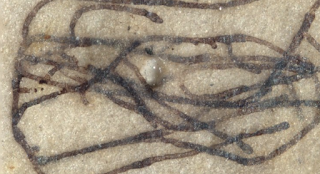 Strange, vein-like shadows imprinted in ancient rocks are some of the most important clues yet in piecing together the timeline of photosynthesis. At 1 billion years old, the tiny fossils are the oldest example of green algae we’ve ever discovered. Even from all those eons ago, the fossils show evidence of characteristics in common with modern algae. They represent multicellular organisms with branching structures and even root systems. Paleontologists have named the newly discovered, ancient algae Proterocladus antiquus, and it beats the previous record-holder – the fragmentary Proterocladus, 800 million years old (it’s possible they’re both the same species).
Strange, vein-like shadows imprinted in ancient rocks are some of the most important clues yet in piecing together the timeline of photosynthesis. At 1 billion years old, the tiny fossils are the oldest example of green algae we’ve ever discovered. Even from all those eons ago, the fossils show evidence of characteristics in common with modern algae. They represent multicellular organisms with branching structures and even root systems. Paleontologists have named the newly discovered, ancient algae Proterocladus antiquus, and it beats the previous record-holder – the fragmentary Proterocladus, 800 million years old (it’s possible they’re both the same species).
9. Minke whales are struggling to communicate over the din of ocean noise
Imagine a frog call, but with a metallic twang—and the intensity of a chainsaw. That’s the “boing” of a minke whale. And it’s a form of animal communication in danger of being drowned out by ocean noise, new research shows. By analyzing more than 42,000 minke whale boings, scientists have found that, as background noise intensifies, the whales are losing their ability to communicate over long distances. This could limit their ability to find mates and engage in important social contact with other whales.
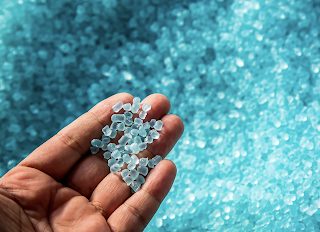 “Nurdles” may sound cute but they pose a huge risk to the marine environment. Also known as “mermaid tears”, these small plastic pellets are a feedstock in the plastic industry. Instead of being converted into household items, many end up in the ocean, collecting toxins on their surfaces and being eaten by marine wildlife. Not so cute now, are they? Nurdles are the building blocks for most plastic goods, from single-use water bottles to television sets. These small pellets—normally between 1mm and 5mm – are classed as a primary microplastic alongside the microbeads used in cosmetic products—they’re small on purpose, as opposed to other microplastics that break off from larger plastic waste in the ocean.
“Nurdles” may sound cute but they pose a huge risk to the marine environment. Also known as “mermaid tears”, these small plastic pellets are a feedstock in the plastic industry. Instead of being converted into household items, many end up in the ocean, collecting toxins on their surfaces and being eaten by marine wildlife. Not so cute now, are they? Nurdles are the building blocks for most plastic goods, from single-use water bottles to television sets. These small pellets—normally between 1mm and 5mm – are classed as a primary microplastic alongside the microbeads used in cosmetic products—they’re small on purpose, as opposed to other microplastics that break off from larger plastic waste in the ocean.
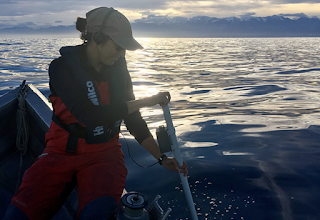 Otago scientists studying sperm whales off the coast of Kaikōura have discovered earthquakes affect their ability to find food for at least a year. The University of Otago-led research is the first to examine the impact of a large earthquake on a population of marine mammals and offers new insight into how top predators such as sperm whales react and adapt to a large-scale natural disturbance. Earthquakes and aftershocks can affect sperm whales in several ways, the study explains.
Otago scientists studying sperm whales off the coast of Kaikōura have discovered earthquakes affect their ability to find food for at least a year. The University of Otago-led research is the first to examine the impact of a large earthquake on a population of marine mammals and offers new insight into how top predators such as sperm whales react and adapt to a large-scale natural disturbance. Earthquakes and aftershocks can affect sperm whales in several ways, the study explains.
———————————————–

